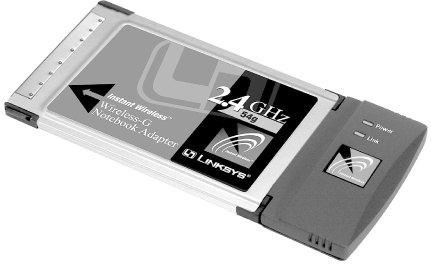2.4 Third-Party Connection Solutions
| If you want to use Wi-Fi equipment from companies other than Apple, you have a few options, and some decisions to make. First you'll need to decide how you will connect the Wi-Fi equipment to your Macintosh. You have three choices:
Most of the time, if you have a Mac with an appropriate slot, it makes more sense to use Apple's AirPort or AirPort Extreme cards in your Macs, rather than other vendors ' Wi-Fi cards. The Apple cards are usually more expensive than third-party cards, but they are installed internally, so they don't take up your notebook's PC card slot. Plus, the software driver to run the cards is built into Mac OS X or readily downloadable from Apple. But if you want to use Wi-Fi hardware from other manufacturers, their drivers are also available. 2.4.1 PC CardsIf you have a PowerBook with a PC card slot, you can use the slot to host a wireless card. Many manufacturers sell 802.11g and 802.11b cards that will work (see the PC Card Drivers sidebar for the software side of the hookup equation). These cards are usually less expensive than Apple's equivalent offerings, and smart shoppers can often find cards for half the price Apple charges. A fine example is the 802.11g-compatible Linksys WPC54G Wireless-G Notebook Adapter, shown in Figure 2-5. Figure 2-5. The Linksys WPC54G 802.11g PC card adapter; photo courtesy of Linksys You can see that the card has a gray cap at one end. This is the card's antenna, which projects from the side of the PowerBook. PC card wireless adapters can't take advantage of the internal antennas built into many PowerBook's cases. In the case of the Titanium PowerBooks, this is an advantage, as those notebooks have notoriously poor wireless range. See Section 2.6 later in this chapter for more information on solving this problem.
To use the PC card in your PowerBook, simply insert it into the PC card slot on the side of the machine. After a moment, a PC card icon will appear in the menu bar, as shown in Figure 2-6. Figure 2-6. The PC card menu The PC card menu shows the name of the PC card device, and allows you to turn the device off without removing it from the computer. To turn the device back on, however, you will need to remove and reinsert the PC card. Once the computer recognizes the card, you can use the regular AirPort software to join, create, or administer wireless networks, as detailed in Section 2.5 later in this chapter, and in Chapter 3. 2.4.2 USB AdaptersIf your Mac has a free USB port, you can use a wireless USB adapter to get the Mac on the wireless network. There are several devices that work with Mac OS X, including the D-Link DWL-122, shown in Figure 2-7. The DWL-122 plugs into any USB port and uses the AirPort software for configuration. Figure 2-7. The DWL-122 wireless USB adapter; photo courtesy of D-Link 2.4.3 PCI CardsDesktop Macs with PCI slots but no AirPort slots, such as the Blue and White Power Macintosh G3, can use a wireless network by opening the computer and installing a wireless PCI adapter, such as the Buffalo AirStation WLI-PCI-G54, shown in Figure 2-8. As with PC cards, PCI card adapters are recognized by the system and used by the AirPort software; as long as you make sure that the PCI adapter is compatible with Mac OS X, you should have no problems using the adapter in wireless networks. |
EAN: 2147483647
Pages: 100